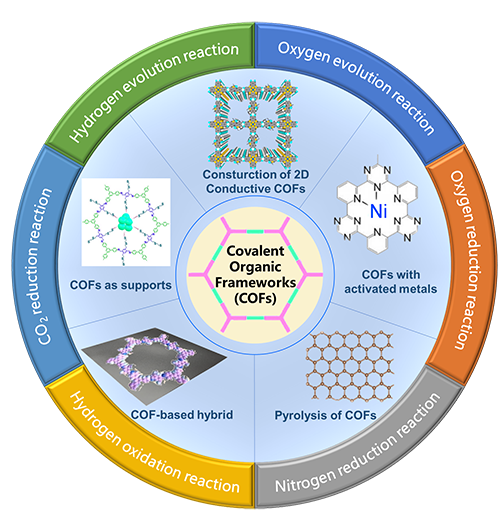
Cover Picture
Recent Advances in C2 Gases Separation and Purification by Metal-Organic
Frameworks
Zhengyi Di, Xinjing Zheng, Yu Qi, Heng Yuan and Cheng-Peng Li*
Submit a ManuscriptRecent Progress in Covalent Organic Frameworks (COFs) for Electrocatalysis
Cha Li, Zining Qiu, Hongming Sun*, Yijie Yang and Cheng-Peng Li*
Chin. J. Struct. Chem. 2022, 41, 2211084-2211099 DOI: 10.14102/j.cnki.0254-5861.2022-0162
October 31, 2022
covalent organic frameworks, electrocatalyst, catalytic performance, catalytic kinetics, energy conversion
ABSTRACT
Electrocatalysis provides various technologies for energy storage and conversion, which is an
important part of realizing sustainable clean energy for the future. Covalent
organic frameworks (COFs), as emerging porous crystalline polymers, possess
high specific surface areas, tunable pore structures, high crystallinity and
tailorable functionalization. These features endow COFs with abundant active
sites and fast electron transport channels, making them potentially efficient
electrocatalysts. In recent years, COF-based electrocatalysts have been widely
developed for hydrogen evolution reaction (HER), hydrogen oxidation reaction
(HOR), oxygen evolution reaction (OER), oxygen reduction reaction (ORR),
nitrogen reduction reaction (NRR) and carbon dioxide reduction reaction (CO2RR).
In this review, design strategies of COF-based electrocatalysts are briefly
summarized, including applying COF as supports, introducing active metals in
COF, constructing two-dimensional conductive COF, formation of COF-based hybrid
and pyrolysis of COF to obtain carbon
materials. Then, the recent research progress in COF-derived
catalysts for specific electrocatalytic reactions is introduced systematically.
Finally, the outlook and challenges of future applications of COFs in
electrocatalysis are highlighted.







